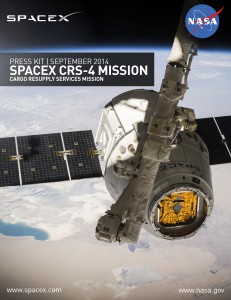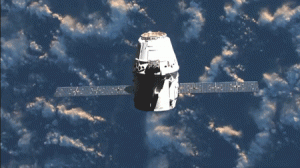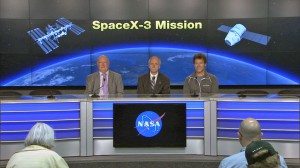The SpaceX launch control team has been given a “go” to fuel the Falcon 9 rocket for the launch of SpaceX CRS-4 to the International Space Station. There is a 30 percent chance for favorable weather at the liftoff time, which has changed by one second to 2:14:38 a.m. EDT Saturday.
The fourth SpaceX cargo mission to the space station under NASA’s Commercial Resupply Services contract is scheduled to launch from Space Launch Complex 40 at Cape Canaveral Air Force Station in Florida. NASA television coverage will begin at 1 a.m. The spacecraft’s 2.5 tons of supplies, science experiments, and technology demonstrations includes critical materials to support 255 science and research investigations that will occur during the station’s Expeditions 41 and 42.







